Building Repeater Systems
We've put together a brief summary of the basics of an in-building cellular signal repeater system in nontechnical terms. We've also included a short video. We explain the components and factors to consider when selecting each part of a system. Remember, much of the following are generalizations and simplifications but enough information to select parts for a simple system. If you need more help or have questions, please feel free to contact us.
The Basic System
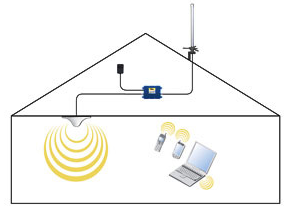
A cell repeater system is a system that takes the cellular signal from outside a building, amplifies it, then repeats (rebroadcasts) the signal inside of a building.
A simple repeater system consists of 3 essential components:
- Outside Antenna
- Amplifier
- Inside Antenna
What It Does
A cellular repeater system captures the signal using the Outside Antenna. The signal transfers to the Cellular Repeater Amplifier through a cable. The signal is then amplified and rebroadcast through the Inside antenna. Sending a cellular signal works in reverse. The inside antenna captures the signal, and it travels to the amplifier. The signal is amplified and sent back to the tower via the outside antenna.
How It Works Video
Here is an excellent video by Wilson Electronics on how an In-Building Signal Booster.
System Components
Outside Antennas
The outside antenna can be omni-directional (capturing a cellular signal from around its whip, or it can also be a directional antenna (sending and receiving the signal in one direction).
Omni Directional Antennas
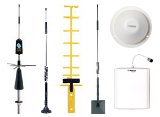
Omni-directional building antennas are best for capturing a signal from several towers in the area. For instance, use an omni-directional antenna if your repeater system installation goal is to obtain a signal from several service providers (AT&T, Sprint, Verizon, T-Mobile for example). And, each service providers tower is in different directions, an omni-directional antenna is best.
Directional Antennas
Directional antennas have higher gains because their radiation pattern focuses in one direction. Use a directional if your installation requires the strongest signal and your service provider(s) are located in one direction.
Indoor Antennas
Just like outside antennas, inside antennas can be omni-directional or directional. How you plan to install an inside antenna will have a bearing on which antenna will work best for your installation.
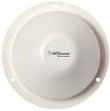
Ceiling Mount Antennas
Typically, Dome Antennas are mounted on ceilings. They are directional and radiate at 360 degrees horizontally and about 150 degrees vertically. Dual polarity Dome antennas will radiate a small distance upwards as well as downwards. They work best when used in 2 story applications where the antenna mounts between floors. Panel antennas can be ceiling mounted on taller ceilings like those found in warehouses. Panel antennas radiate at about 60 degrees downward from the ceiling.
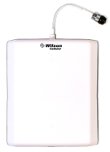
Wall Mount Antennas
Panel Antennas are typically used as wall mount antennas. Panel Antennas have higher gains and radiate at a smaller angle than the Dome antenna. Use when you want a more focused signal radiated a longer distance. Dome antennas can also be used as a wall mount antenna for applications requiring wider, shorter coverage.
Cellular Amplifiers
The cellular amplifier is the heart of the repeater system. It takes the outside signal, amplifies it then rebroadcasts the signal through the system's inside antenna. A few key factors on amplifiers are:
- Gain (dB)
- Output Power (Watts)
- Frequency (MHz)
- Oscillation Control
Amplifier Gain
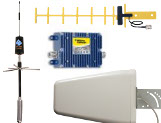 Amplifier Gain is used as a relative measure of improved cellular coverage area inside. The higher the gain, the more area is typically covered. If one amplifier has 3db gain more than another amplifier, the amplifier with 3db more gain will cover roughly twice the area. So why don't you just purchase the booster with the highest gain? Cost and antenna separation requirements. It's important to note that the higher the gain, the more separation distance required between the inside and outside antenna (Read more in "Oscillation Control" below).
Amplifier Gain is used as a relative measure of improved cellular coverage area inside. The higher the gain, the more area is typically covered. If one amplifier has 3db gain more than another amplifier, the amplifier with 3db more gain will cover roughly twice the area. So why don't you just purchase the booster with the highest gain? Cost and antenna separation requirements. It's important to note that the higher the gain, the more separation distance required between the inside and outside antenna (Read more in "Oscillation Control" below).
Output Power
The output power of an amplifier can be used as a relative measure of power when communicating with your service provider's tower. Higher power is not necessarily better. The power required is just enough to get the necessary coverage inside and not negatively affect a service provider's tower and knock other customers off (read "Oscillation Control" below). The maximum power allowed with the US is 3 watts. A good cellular amplifier will have oscillation control and will monitor the power of the amplifier to and from a tower.
Frequency
The cell amplifier used must match the frequency used by your service provider. Most US cellular service providers use wireless networks that are within 800MHz or 1900MHz frequency ranges. For 4G, carriers may use different frequencies. For example, AT&T and Verizon may use 700MHz for their 4G LTE service. T-Mobile may use 1700/2100MHz for their 4G.
Many countries outside the US use 900MHz, 1800MHz, and 2100MHz. Sometimes a service provider will use different frequencies for cell phones and mobile internet data.
Multiple band amplifiers are available to cover 800MHz and 1900MHz. Some systems will also include 4G frequencies like 700Mhz. They are more convenient as they will include various services.
Oscillation Control
Signal oscillation occurs when the inside antenna signal contacts the outside antenna. Instead of the outside antenna getting a signal a service providers tower, the two repeater system antennas communicate with each other.
IMPORTANT WARNING: Oscillation control is imperative to your repeater system setup. Cellular amplifiers, if not manufactured or installed correctly, can interfere with a service provider's towers and adversely affect the service to other users of the tower. It's imperative that a system have oscillation control to avoid this interference.
Tech Tip - Antenna Separation
For a successful installation, it's critical that minimum required separation distance be maintained between the inside and outside antennas. If the two antennas (outside and inside) are too close, oscillation (or feedback) will occur. The power booster should then automatically reduce power or shut down entirely to protect the cellular network from interference. Always read the install guide, and if you have any questions about required separation distance between antennas, contact us.
Featured Cellular Signal Booster Systems
-


weBoost Home MultiRoom Building Signal Booster System 470144
weBoost
NOW ONLY: $569.99Target Your Home's Weak Signal Areas weBoost Home Multi-Room Signal Booster System With its considerable power, the Home Multi-Room delivers reliable cellular connectivity throughout a coverage area of three large rooms; up to 5,000 square feet. The...- SKU:
- AP470144
- Availability:
- In Stock- Usually Ships In 1-2 Days
- Short Description:
- Cellular Signal Booster System for Small - Midsized Homes, Work Trailers, Portable Buildings, Mobile Homes.
NOW ONLY: $569.99 -
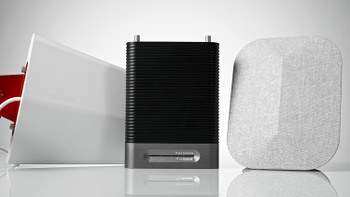

weBoost INSTALLED | Home Complete Building Signal Booster System
weBoost
NOW ONLY: $1,299.99The FIRST "Installation Included" Home Cell Signal Booster weBoost Installed | Home Complete Signal Booster System is the turnkey residential solution for fixing bad cell signal coverage for good. It leaves all the installation work to a...- SKU:
- AP474445
- Availability:
- In Stock- Usually Ships In 1-2 Days
- Who Is Most Likely to Use This Product:
- Any home owner with a weak indoor cellular signal that prefers a professionally installed system over D.I.Y. system. Includes households where several cellular devices are used. Great for houses made of signal-blocking materials.
NOW ONLY: $1,299.99
